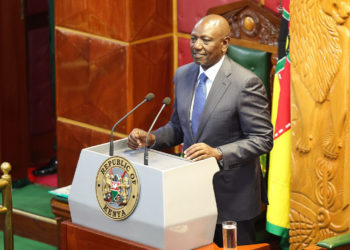The National Treasury plans to introduce sweeping tax reforms aimed at expanding the tax base, enhancing revenue collection, and ensuring sustainable county funding. The proposed changes, outlined in multiple amendment bills for 2024, introduce new digital marketplace taxes and align multinational taxation with global standards.
Treasury Cabinet Secretary John Mbadi announced the reforms through four key bills: the Tax Laws Amendment Bill, Tax Procedures Amendment Bill, and two Public Finance Management Amendment Bills. The proposals follow public consultations that drew 35 submissions from various stakeholders.
A significant change is the replacement of the Digital Service Tax with a new Significant Economic Presence Tax, which will increase the effective rate from 1.5% to 6% for non-resident businesses operating in Kenya’s digital marketplace. The definition of digital marketplace has been expanded to include ride-hailing services, food delivery services, freelance services, and professional services.
“This will align the taxation of digital services with international best practice,” the Treasury document states.
For multinational enterprises, the legislation introduces a minimum top-up tax ensuring companies pay an effective tax rate of at least 15%. This provision will apply to multinational companies with consolidated annual turnover of KES 100 billion, bringing Kenya in line with global efforts to prevent tax base erosion.
The amendments also address employee benefits and retirement savings. The bills propose increasing tax-exempt employer benefits, including meal allowances from KES 48,000 to KES 60,000 and non-cash benefits from KES 36,000 to KES 60,000. Deductible pension contributions will rise from KES 240,000 to KES 360,000 annually.
In the excise duty realm, the Treasury plans to restructure taxation of alcoholic beverages. The new system will charge KES 22.50 per centiliter of pure alcohol for various categories including beer, cider, perry, and mead, replacing the current rate of KES 142.44 per liter.
The Railway Development Levy will see an increase from 1.5% to 2.5%. The Treasury is also introducing new excise duties on imported goods, with electric transformers and parts facing a 25% rate, imported ink at 15%, and various construction materials including ceramic sinks, washbasins, float glass, surface ground glass, and ceramic flags and pavings all attracting a 35% duty.
To boost tax compliance, the Treasury is extending the tax amnesty program until June 2025. “This amendment will allow more taxpayers to fulfill their tax obligations without suffering interest and penalties,” the document explains.
The bills also address county government funding challenges. Following advice from the Attorney General, the Treasury can allocate up to 50% of the previous year’s approved allocation to counties if the Division of Revenue Bill and County Allocation of Revenue Bill face delays in enactment.
For value-added tax (VAT), the amendments seek to prevent abuse of input tax claims by removing the threshold for applying VAT apportionment formula. Currently, taxpayers making 90% of zero-rated supply can claim 100% input VAT.
The Treasury is reclassifying several items under VAT, moving direction-finding compasses for aircraft, helicopters, locally assembled tourist vehicles, betting services, and air ticketing services from exempt to taxable status. Additionally, agricultural pest control products and their inputs, along with fertilizers and their manufacturing inputs, will shift from zero-rated to exempt status.
To modernize tax administration, the legislation mandates integration of electronic tax systems with iTax for document submission. “The integration of the systems will facilitate the transmission of electronic documents for tax purposes thus minimizing human interaction and enhancing revenue mobilization,” the Treasury notes.
The reforms also address public debt management. The Public Finance Management Amendment Bill aims to clarify the effective date for debt thresholds and mandates implementation of accrual accounting in government operations.
Additional measures to contain public debt include eliminating non-essential spending, implementing a unified payroll management system, rolling out e-procurement, and exploring alternative funding sources such as Public Private Partnerships.


















